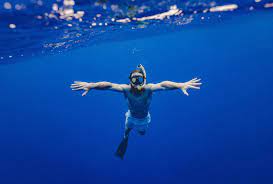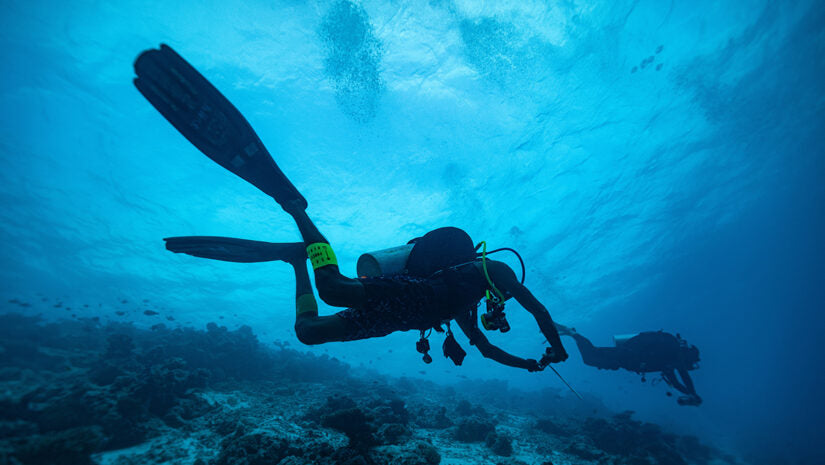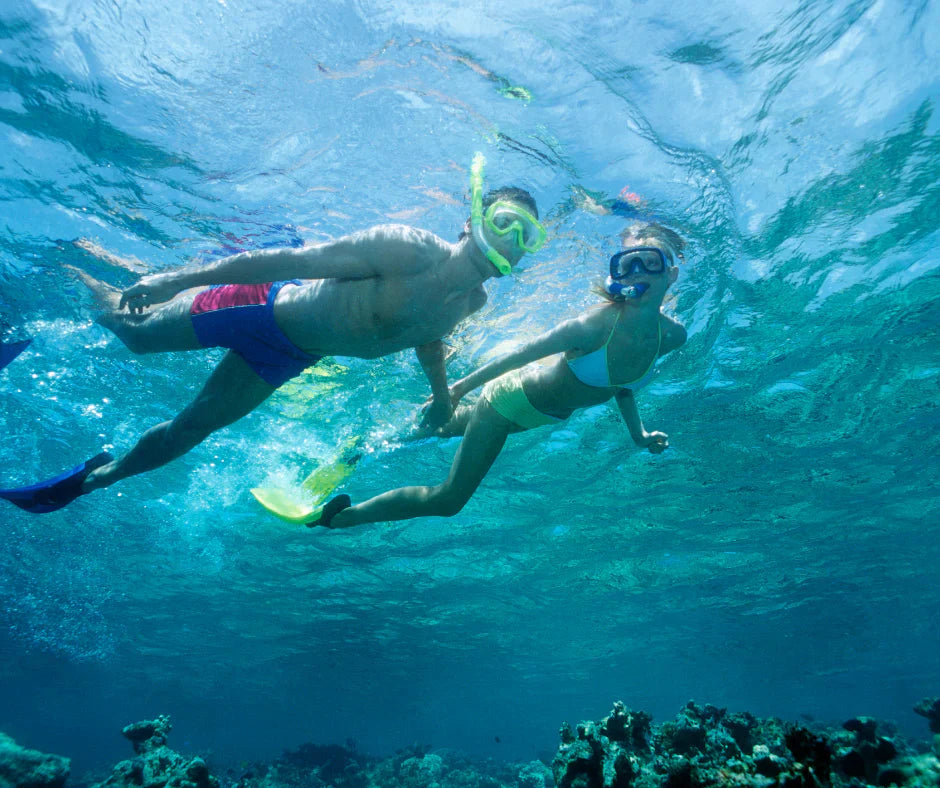Renting snorkeling gear costs 30/day, ideal for short trips (1–3 days), while buying costs 200+ but pays off after 5–10 uses. Frequent snorkelers save long-term; occasional users save renting. Add-ons like anti-fog spray (20) raise ownership costs. Tropical destinations often charge 15 extra for premium rentals.
Daily Rental Costs
In most tourist spots, a basic mask, snorkel, and fin set rents for 30 per day, with premium gear (dry snorkels, anti-fog masks) pushing 50 daily. Some resorts bundle rentals at 60 for a week, but if you snorkel just 3 days, that’s 90—close to buying your own.
Many shops charge 15 extra for sanitization, insurance, or "premium" fittings. If you’re traveling with family, renting for four people at 100 daily—after a 5-day trip, you’ve spent $500, enough to buy two mid-tier snorkel sets.
Key Rental Cost Factors
- Location markup: Beachfront shops charge 20–50% more than inland stores.
- Duration discounts: Weekly rentals often drop to 120, but you’ll still pay 17 per day.
- Child gear: Kids’ sizes cost $5–10 less, but availability is spotty.
- Damage fees: Lose a fin? That’s a $30–80 penalty.
When Renting Makes Sense
- Single-day trips (e.g., a boat tour where gear is included for $10–20).
- Testing gear before buying (try different mask styles for $5–15/day).
- Baggage limits: Avoid airline fees for oversized gear (fins add 2–4 lbs).
When Renting Gets Expensive
- Multi-destination trips: Renting at each stop means $100+ in fees.
- Long stays: A 10-day rental at 200, more than a decent snorkel set.
Rental vs. Buy Cost Comparison
| Scenario | Rental Cost (5 days) | Purchase Cost | Break-Even Point |
|---|---|---|---|
| Solo traveler | 150 | 200 | 2–4 trips |
| Family of 4 | 600 | 800 | 1–2 trips |
| Premium gear | 250 | 400 | 3–5 uses |
Full Gear Price
Kids’ sets cost 20–150 extra. Unlike rentals, buying means no hidden fees, but you’ll need to factor in maintenance (defogger, storage bags, replacements) at $5–30 per year.
A silicone-skirted mask (better seal, less irritation) runs 15–30) often leak. Fins range from 200 (long freediving blades), with mid-range options (25–80) prevent water intake, while basic J-tubes ($10–20) work fine for calm waters.
Breakdown of Gear Costs
- Mask: $15–120 (tempered glass, UV protection, or prescription lenses add cost).
- Snorkel: $10–80 (dry-top models reduce choking risk).
- Fins: $20–200 (shorter fins for travel, longer for strong kicks).
- Extras: Mesh bag (5–15), neoprene socks ($10–25).
Mid-range example: A decent mask (40), and travel fins (180—less than a week’s rental for a family. Budget option: A 10 snorkel, and $30 fins work for occasional use but may fog, leak, or wear out faster.
When Buying Pays Off
- Frequent snorkelers (3+ trips/year): A 30/day rentals after 5 uses.
- Families: Buying four sets for $400 is cheaper than renting for two vacations.
- Travelers to remote spots: Some islands lack rental shops or charge premium rates.
Hidden Costs of Ownership
- Replacements: Masks last 2–5 years; snorkels 1–3 years; fins 5+ years.
- Storage: Saltwater damage ruins gear; rinse kits cost $5–20.
- Travel fees: Oversized fins may require checked baggage ($30–50 per flight).
Verdict: If you’ll snorkel more than twice in 3 years, buying saves money. Splurge on a good mask (fit matters most) and dry snorkel, then save on fins unless you’re a strong swimmer. For kids, buy affordable gear—they’ll outgrow it fast.

Break-Even Trips
For a typical el set25-30 per day. Families break even faster—after just 1-2 vacations—since renting for multiple people multiplies costs quickly.
In expensive destinations like Hawaii or the Maldives, where daily rentals average 10-20 rentals, pushing the break-even point to 7-10 uses. If you travel with gear for 5+ years, maintenance costs (replacement straps, defogger, storage) add about $5-10 annually—but that’s still cheaper than repeated rentals.
Key Factors Affecting Break-Even
- Gear quality: A 300 premium set needs 10+ uses.
- Rental prices: At 40/day, it’s a no-brainer.
- Trip duration: A 7-day rental at 140, nearly the cost of owning.
- Group size: Renting for a family of 4 at $100/day means buying wins after one 5-day trip.
Break-Even Scenarios
- Occasional snorkeler (1 trip/year): Renting makes sense unless you keep gear 5+ years.
- Annual vacationer: Buying saves money by the second or third trip.
- Dive enthusiasts: If you snorkel 3+ times yearly, owning is 50-70% cheaper long-term.
Final math:
- Solo traveler: Breakeven at 4-6 snorkel days (~2-3 trips).
- Couple: Breakeven at 3-4 days (1-2 trips, since rentals double).
- Family of 4: Buying wins after 5-7 total rental days (often just one vacation).
Bottom line: If you’ll use the gear more than 5 times, buying is cheaper. For sporadic use, rent—but compare local prices first.
Best Choice Per Trip
Choosing whether to rent or buy snorkeling gear isn't a one-size-fits-all decision—it depends entirely on your specific trip details. A weekend beach getaway has different needs than a month-long island-hopping adventure. Here's how to pick the most cost-effective option based on real-world trip variables like duration, group size, destination, and frequency of use.
Trip-Specific Recommendations
- Cruise passengers: Most ships rent gear for $15-25/day, but their packages often include discounts for multi-day use. If you'll snorkel at 2+ ports, buying compact travel gear may save money.
- Backpackers: Carrying bulky fins isn't practical. Rent at each location, but bring your own mask ($20-60) for guaranteed fit and hygiene.
- Annual vacationers: If you take one snorkeling trip yearly, buying breaks even in 3-5 years. Consider mid-range gear that balances cost and durability.
Frequency is the ultimate decider. The math is simple:
- 1 trip every 2 years: Rent
- 1 trip annually: Buy after 2-3 vacations
- 2+ trips yearly: Always buy
Pro tip: Own a mask and snorkel ($50-120 total)—which affect comfort most—and rent fins locally. This cuts rental costs by 40-60% while avoiding baggage fees for bulky fins.
Last consideration:Urban dwellers with small apartments might prefer renting to avoid storing gear 360 days/year. But if you have even modest storage, owning means you're always ready for spontaneous trips without hunting for rental shops.
Final verdict:
- Buy if: You'll use gear 5+ days total, travel in groups, visit expensive/remote areas, or snorkel annually
- Rent if: Taking a one-off short trip, traveling solo to budget areas, or lacking storage





Leave a comment
All comments are moderated before being published.
Este site está protegido pela Política de privacidade da hCaptcha e da hCaptcha e aplicam-se os Termos de serviço das mesmas.